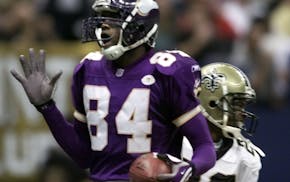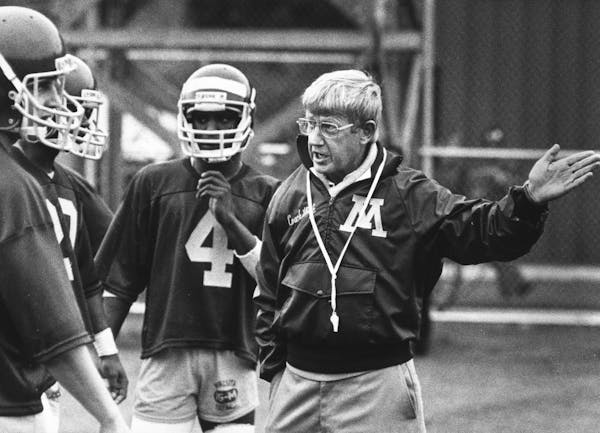There are a lot of questions about how sports will look in the next few months when play eventually resumes, but teams around the Twin Cities already had been trying all kinds of different sales and promotions to try to get fans into the stands before the sports world shut down last month.
The Gophers used different promotions with Cub Foods that were really popular last year when they were trying to build attendance for football, men's hockey and men's basketball.
Athletic director Mark Coyle said that the university simply had to do everything it could to drive up attendance.
"If you look at attendance across the country, programs all over the country are trying to get creative in terms of how to maintain and enhance their attendance for their games. We are no different," he said. "We have been working incredibly hard. If you recall with men's hockey, we reduced season-ticket prices; I think they're the lowest they have been since the early '90s when we moved into 3M Arena in Mariucci.
"Basketball prices, we looked at our basketball prices and made some adjustments there. We also looked at our scholarship seating prices and made some adjustments there. We are trying to be very creative and working very hard to get more people to come to our games."
It worked in football. The Gophers had the third-largest increase in attendance in the nation from 2018 to 2019, going from an average of 37,915 fans per game to 46,190.
But in other revenue sports, there was mostly bad news when it came to attendance.
Gophers men's basketball averaged 10,675 fans per game, down from 11,850 in 2018. And that number has been falling since a recent high of 13,453 fans per game in 2010.
Vote: Would you attend a sporting event without a vaccine for coronavirus?
Gophers men's hockey averaged just 7,456 fans per game, a number that seems impossible when you consider that Mariucci holds 10,000 fans and the team averaged 11,552 fans per game during the 2013-2014 season. Going way back, almost every men's hockey game used to sell out, but whether it's ticket prices or moving from the WCHA to the Big Ten, attendance has fallen off big time.
BTN revenue share
The Big Ten Network continues to bring in huge dollars for the Gophers, but if fans don't come to games, it's a huge blow not just financially but in terms of the enthusiasm around the program.
Anyone who was at the Gophers football win over Penn State last year will tell you that fans can carry teams in huge moments.
When University of Minnesota sports shut down in March, President Joan Gabel was asked about the athletic department relying on the Big Ten Network for a big chunk of funding and how that could change over time.
"It is something that we talk about, the Big Ten Network leadership and the relationship of the Big Ten to it's network is excellent and thoughtful, strategic, looking around corners," Gabel said. "What you're describing is something that everyone in every conference, certainly the ones that distribute over television the way we do.
"People are clever, they're still watching but it's just a matter of making sure you capture that interest in a way that makes sense for everybody involved."
Pro teams, too
Maybe the biggest attendance success story last season was the Twins, who went from 1.9 million fans in 2018 to 2.3 million in 2019.
But even with all of the excitement around the club as it won 101 games, the team was still looking at unique and aggressive ticket packages to get fans in the stands.
It had a new ticket package called Twins Pass, where fans could pay just $49 per month to get access to standing room-only areas for every home regular-season game.
The Wild, meanwhile, announce a lot of sellouts, but it had a fair amount of single-game tickets for sale and attendance had dropped.
The average attendance at Xcel Energy Center was 17,472 this season compared with a peak of 19,827 per game in 2015-2016.
The Timberwolves have struggled with attendance for over a decade, except for a few seasons here and there, and this season was no different. They ranked last in the NBA with just 15,066 fans per game, down from 15,305 last season.
The Vikings, meanwhile, are the lone exception in the state.
They sold out every game at U.S. Bank Stadium and averaged 66,849 fans per game. Their percentage of tickets sold was 100.3, above a sellout, and ranked fifth in the NFL behind only the L.A. Rams, 49ers, Bears and Seahawks.
Another club that had ticket success was the Loons, who sold out every game during their inaugural season at Allianz Field, which holds just over 19,000 fans.
But every team in this town was trying to come up with unique ways to sell tickets and bring fans to games before the current health scare.
And that's only going to get more difficult now.
TV revenue matters
A big reason why sports teams may try to work out a way to play games without fans, if they have to, is because television revenue is such a big part of their budgets.
Even if teams can't sell tickets, they can still make a lot of money broadcasting games, and local partners such as Fox Sports North would probably see as big of a viewership bump as national stations such as ESPN or NBC.
Last season the NFL TV deal gave each team $255 million, and it was reported that the league brought in $15 billion in revenue overall.
Commissioner Roger Goodell has said he wants that number to be at $25 billion by 2027, and the biggest way he's going to accomplish that is with a new TV deal. The current contract with "Monday Night Football" on ESPN runs through 2021 while all other deals run through 2022.
If the NFL plays games this year without fans and has huge TV numbers, that could give the league a lot of leverage in negotiations.
But there's no doubt that leagues and teams would be much worse off without having fans in the stadium.
Once leagues are given the OK to start having fans back in stadiums, they are going to have to work harder than ever to sell tickets.
Sid Hartman can be heard on WCCO AM-830 at 8:40 a.m. Monday and Friday, 2 p.m. Friday and 10 a.m. Sunday. • shartman@startribune.com

Sid Instant Replay from 1977: Vikings' Super Bowl loss to Raiders hurt the most

Read Sid's column from 1974, when Ara Parseghian left Notre Dame

Sid instant replay: No greater hero than Twins' Morris in World Series


